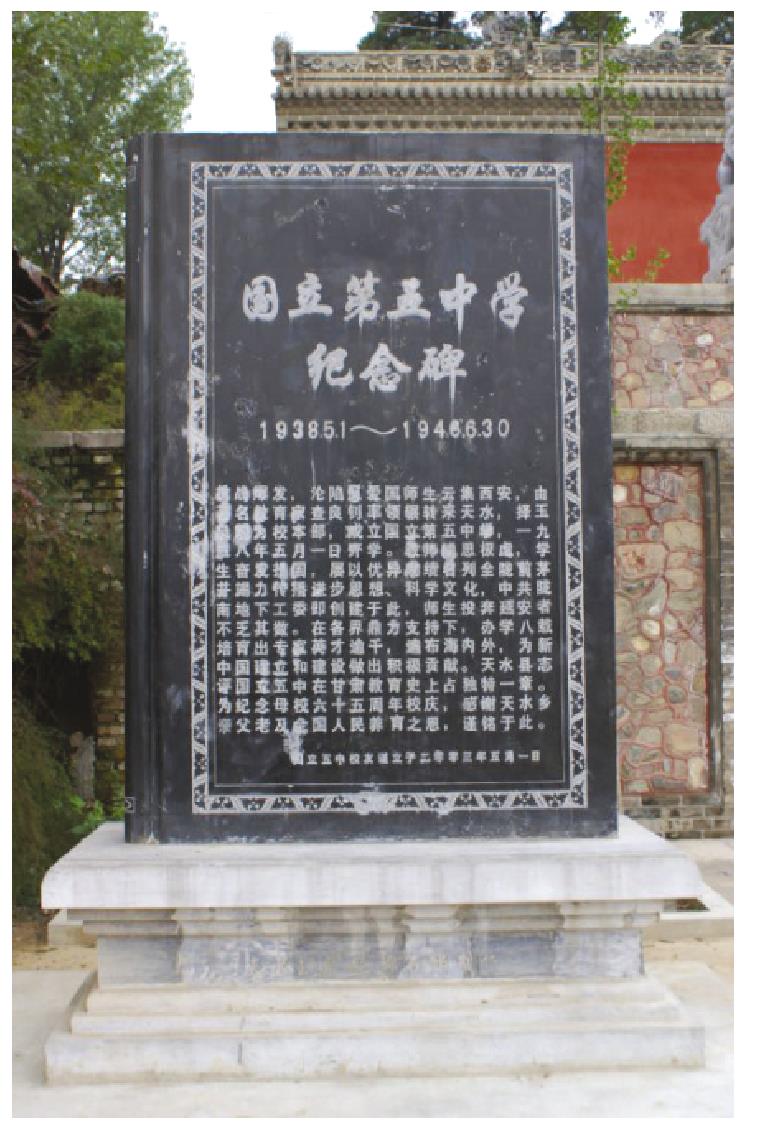国立五中
国民政府教育部在四川、陕西、甘肃分别设立的10所国立中学之一。民国二十六年(1937年)冬成立。首批学生于民国二十七年(1938年)春节后在西安市编队集结,步行至天水,校址在玉泉观及其附近的关帝庙和向家庵。建校初,学校教学编制设有高中部、初中部、师范部和职业部四部分。高中部10个班,初中部14~15班,师范、职业部各1班。共有学生1400余人,教职工数十人。学校实行春、秋两季始业,春季招生少,秋季招生多。民国二十八年(1939年)秋,迁初中两个分校 学 生约7~8班于秦安泰山庙、甘谷县城粮市街,师范、职业部迁 往甘 谷 大像山。民国二十九年(1940年)春,师范、职业部停办,此后,因 学生 减少,秦安、甘谷初中部停办,在礼县设初中分校。民国三十一年(1942年)春开始招收天水籍学生,每次只招5人。抗日战争胜利后不久,遵教育部令各国立中学停办,不再招生,大部分师生离校他去,无家可归和即将毕业的学生,均在当地借读。校本部春季毕业生在天水中学借读。部分教师转投天水铁路中学任教,后随铁中迁往乌鲁木齐市。民国三十五年(1946年)初,留校学生全部离校,校产移交地方,正式停办。

位于伏羲庙后院的国立五中纪念碑